A Closer Look At Titian
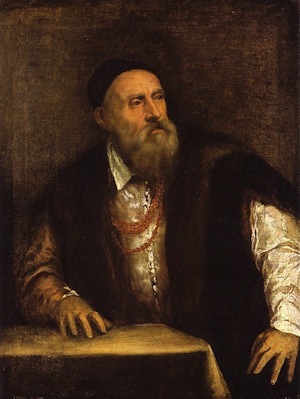
Today, we are focusing on a single artist in order to more carefully examine the Renaissance period. Titian created great works of art that featured highly expressive figures that exemplified the “rebirth” spreading throughout Italy and Europe. Titian’s figures graced his altarpieces, portraits, mythologies, and pastoral landscapes.
Tiziano Vecillio (ca. 1488-1576), known as Titian, is perhaps the most significant Venetian artist of the sixteenth century. Titian eventually gained international fame for his exquisite painterly skills. He was known for his remarkable use of colors and his style was highly influential well into the seventeenth century.
Titan’s portraits provide a stunning history of Renaissance fashion for both men and women. We will show some wonderful examples further along in this post, but for now, let us review an insightful commentary made by Wilhelm Suida in his New Light on Titian’s Portraits- II:
"Titian’s portraits are of incalculable value, not only as matchless works of art, but also as historical documents. The painter of the great world of his day portrayed many of the principal actors in the important events of the period, men unequalled in the history of mankind."
Early Works and Altarpiece Paintings by Titian:
Titian trained under two Venetian artists; first Giovanni Bellini and, later Giorgione. It was largely from Giorgione that Titian developed his tonal approach to painting and his landscape art style. He atmospheric and evocative pastoral landscapes depict the beauty of nature that is celebrated alongside love and music.
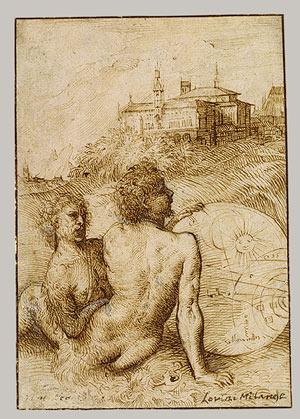
Two Satyrs in a Landscape. 1509-15.
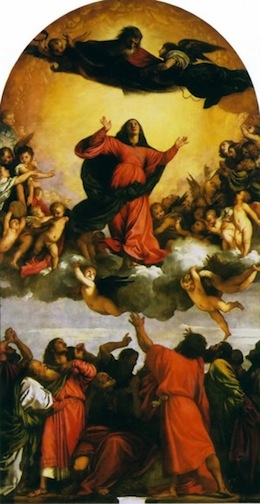
Assumption of the Virgin. 1516-18.
This was Titian’s first major public commission in Venice for the high altar of Santa Mario Gloriosa dei Frari. It is a novel portrayal of the Virgin Mary surrounded by the apostles. Titian depicts Mary full of life and movement, rather than the calm, subdued figure she was more commonly represented as during that time.
With the completion of this work, he successfully established his place as the most prominent painter of the city. This image broke tradition with its dynamically twisting, large scale figures. It also draws in its viewers eyes with its enticing bold colors.
Portraiture by Titian:
Our main focus in this discussion is turned to the portraits painted by Titian, for these truly show the reality of the Italian Renaissance. It is in his portraits that we see, not mythological or religious figures, but real people that lived during this fascinating period of time.
Through portraits we can piece together clues from the past that reveal otherwise unrecorded or forgotten histories. We can discover the status of an individual through their portrait and the influence of certain men.
We can also see interesting displays of fashion that are captured in these carefully executed portraits. Every stroke and object has been deliberately painted and, therefore, deserve our attention.
His complex stare has a sensitivity that is gathered through his eyes. It is a portrait, but also an image of the cultivated state of mind of this particular individual. Titian is remembered to this day for convincing psychological portrait such as this.
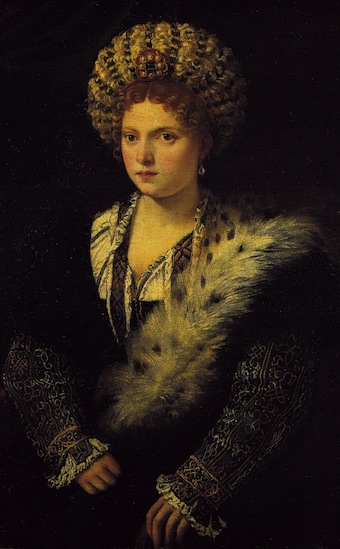
Portrait of Isabella d’Este. 1534-36.
Isabella d’Este was the daughter of Ercole I d’Este, Duke of Ferrara, and Eleanor of Naples. She was a powerful patron of culture; collecting art and developing a highly refined court in Mantua.
Although she is portrayed as a young woman, Isabella was 62 years old when this portrait was painted. In the original painting by Titian, he painted a Isabella as the aged woman she was. She was so upset with this unflattering, albeit realistic, portrayal that she made him repaint a more idealized image of herself, requesting that she appear forty years younger.
Isabella had strong ideas on how she wished to be portrayed and saw to it that Titian captured her essence rather than her actual appearance. She was immensely pleased with the final product which shows her as a young woman. Her girlish beauty is emphasized with her gown decorated with gold and silver trim, and her luxurious balzo.
Titian flatters his sitter with an idealized image feeding into her vanity. Her self awareness was not uncommon of that time, where women of her status were constantly on public display and expected to be both physically pleasing and personally charming. At the same time, he succeeds in portraying her modesty and chastity.
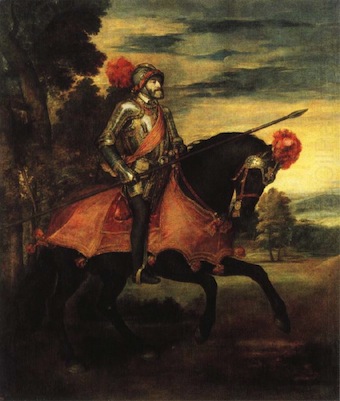
Equestrian Portrait of Charles V. 1548.
The horse is shown slightly rearing with only its hind legs touching the ground, while Charles still holds the reins effortlessly. This is a departure from traditional depictions of horses in art during that time which showed only horses in a stationary pose. This was a deliberate artistic choice made by Titian to imply Charles’ superior horsemanship.
The directness and sense of contained power in this portrait shows Titian’s true talent as an artist, bestowing Charles with a sense of strength unachievable through typical iconographic elements.
Charles shines in his gleaming armor as the deep reds of the painting highlight his heroic victory in battle.
Here are some more portraits painted by Titian that demonstrate the complex beauty he is able to bring forth from his subjects. Also, the fashionable attire worn by the sitters shows the styles found in Venice during the Renaissance (with the exception of the Pope- who was clearly not the norm when it can to fashion!).
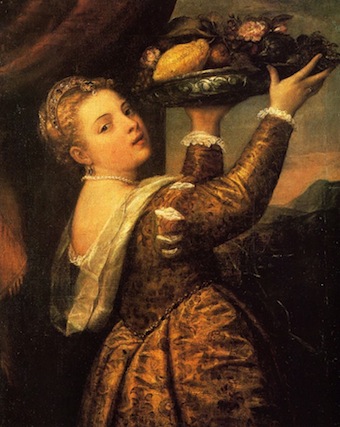
Girl with A Basket of Fruits. 1555-5.
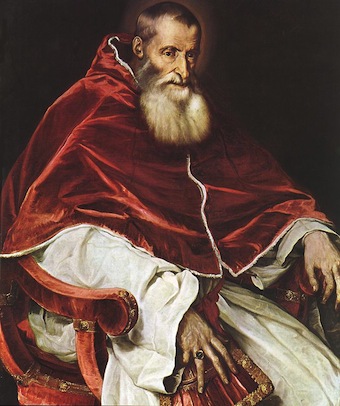
Portrait of Pope Paul III. 1543.
Mythology and Poesia Paintings:
Among his other works, Titian completed a number of paintings with mythological subjects. These poesie, as he called them, were certainly a form of visual poetry.
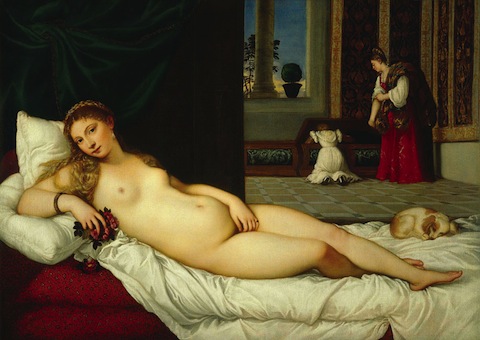
No classical or allegorical symbols are to be found in this painting to signal Venus as a goddess; yet her manner remains unapologetically sensual. She appears unconcerned with her nudity and stares frankly at her viewer.
The dog, a common sign of fidelity in art, is asleep in the background. The dog is deliberately shown sleeping, hinting that the woman portrayed is unfaithful.
*Give us your thoughts about Titian, Renaissance Art, Fashion, or anything else! Comments are more than welcome here on our blog or on our Facebook page. Or just leave us a "hello!"






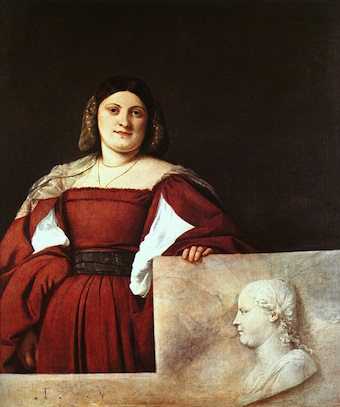
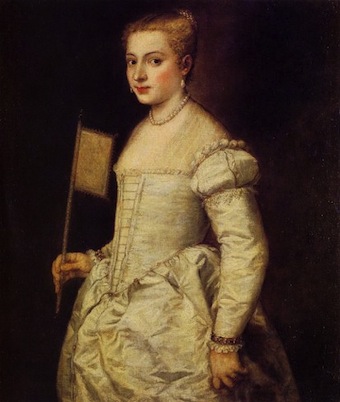

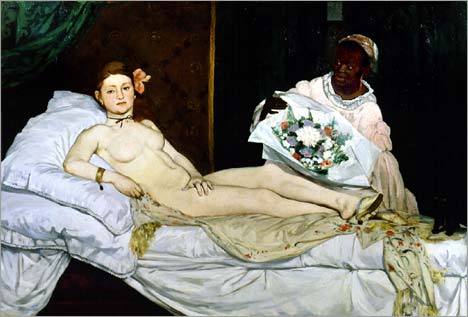
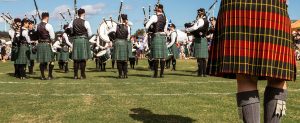
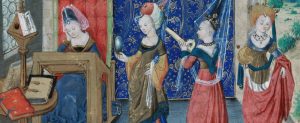
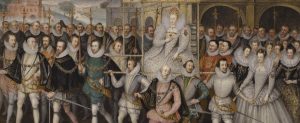
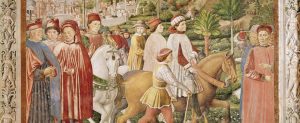
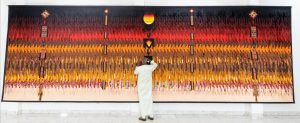
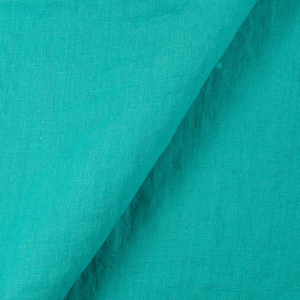


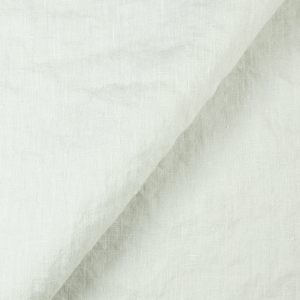

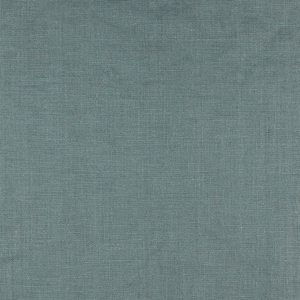





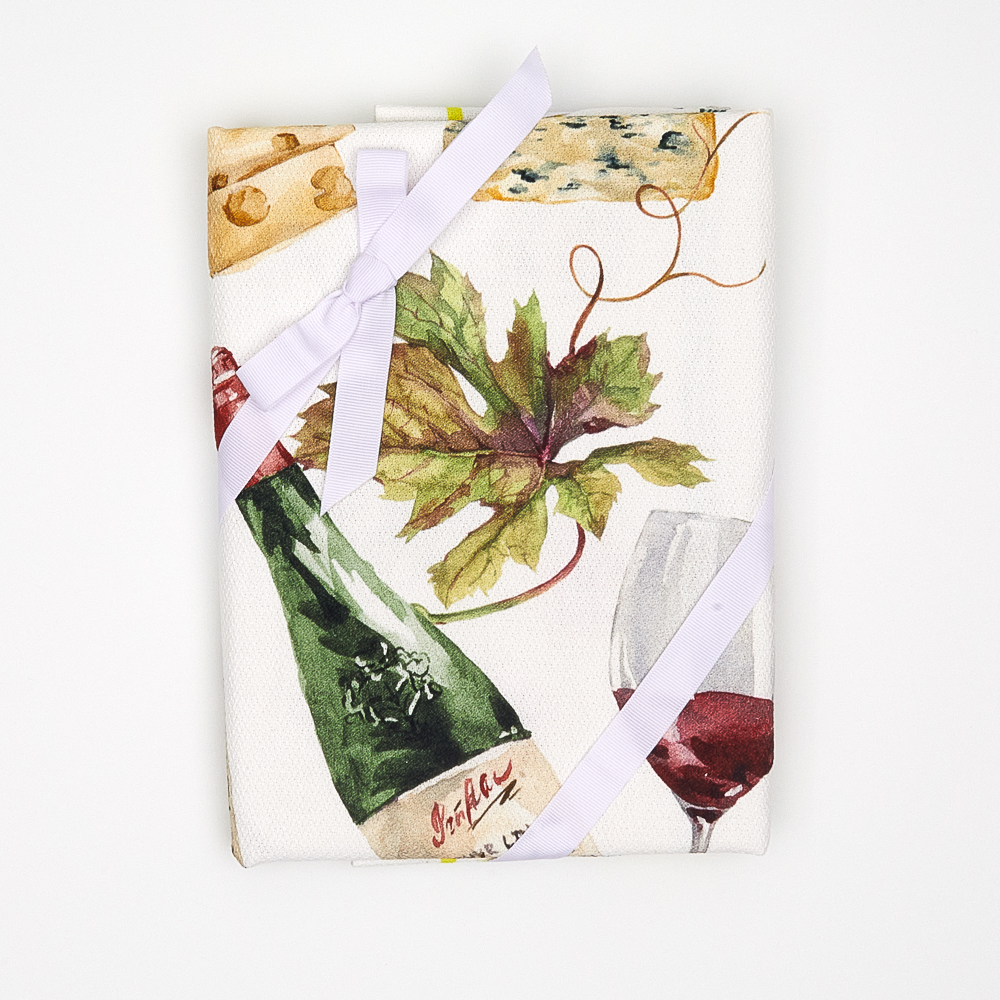














3 Comments
barbara
hello wonderful ,, I love Titian especially since my daughter is a Titian redhead!
Carlos Azaceta
Thank you!
Very interesting and instructive.
I participate with my wife at Renaissance fairs as dancers and entertainers, and we always look forward to learning something more.
Carlos
Dr Melanie St Jean
Hello,
I teach an art vs fashion course both at a university and a study abroad program in Italy. I am so happy that there are others out there that see the importance of art in todays fashion!
I know of one book that os written on the subjecr but the pieces written here are very well done!
looking forward to seeing and reading more. I would love to share this with my students!